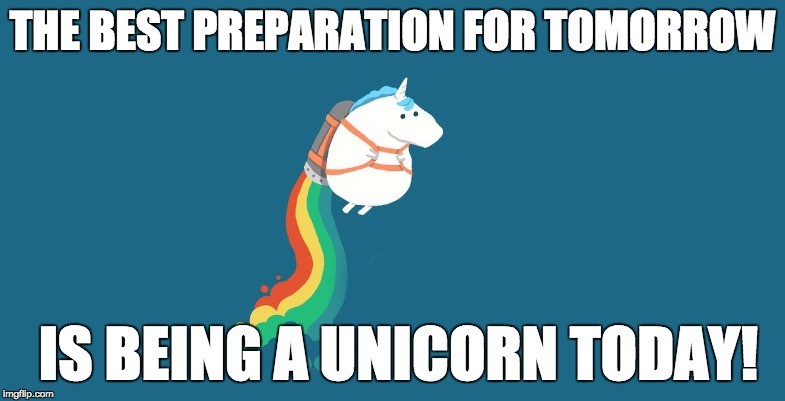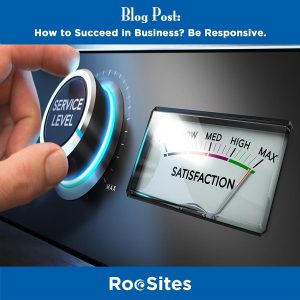There’s no shortage of ways to measure the success of your conversion rate optimization (CRO) efforts. You can measure:
- Bounce rate
- Time on site
- Sign-ups
- Shopping cart abandonment
- Purchases
- Cost per conversion
- Etc.
But one metric is more important than all the rest.
I know what you’re thinking. Conversion rate is the most important CRO metric you should track, right? Duh? Seems like a no-brainer.
Actually, no.
In my opinion, there’s an even more important metric you should be paying attention to; Click-through rate (CTR) is THE most important conversion metric.
I’m not crazy. Here are three reasons why.
1. High CTRs Lead To Higher Conversion Rates

There is a clear relationship between click-through rates and conversion rates. We’ve seen it over and over.

The higher your click-through rate is, the higher your conversion rate will be. Here’s an example of data from just one large WordStream client account. We see this in many accounts, but this is just one illustration. (The data gets murky when you combine accounts, since conversion rates depend on the industry and offer.)
Why do we see this? If your offer can get people excited enough to click, then that excitement tends to carry through all the way to a purchase.
Really, it doesn’t matter how you drive those clicks to your offers. It can be through paid search ads, retargeting, social media, video, email, or another marketing channel.
This is what makes improving your CTR so crucial. If you can 2X your CTR, then it’s not uncommon that (on average) you’ll boost your conversion rate by 50% as well!

If you have average click-through rates, you’ll have OK results. Do you really just want to settle for OK, though?
You know what else is just OK? Donkeys. Don’t be a donkey. Be a magical unicorn!
It’s also important to note that CTR will vary wildly by channel and industry. For example, here’s a look at the average CTR for Google AdWords on search and display across 20 popular industries:

You can see that the average CTR in the dating & personals industry is more than double that of the legal industry.
2. Conversion Rates Are Biased

Bias is a big issue when you’re looking at your conversion rates. Basically, all a conversion rate will tell you is the percentage of conversions by people who have previously expressed interest in what you offer.
So let’s say someone receives an offer from your company via email. These people already know you from visiting your site for one reason or another at some point in the past and liked what they found. You know this because they’ve signed up to receive emails from you. They’re even more biased because they’ve decided to open your email and click through to your site.
So what do you learn here from a conversion rate? Well, you’ve learned what percentage of people who were already in your sales funnel and were already biased toward your product or service have bought from you. That’s awesome and valuable information, no doubt.
After all, that’s how advertising is supposed to work!

But what would be even more valuable to know is how interesting your offer is to new audiences, not just people who have expressed interest in the past and have now decided to view your offer.
A typical website conversion rate is about 2.35% on average. But the top 10% of companies are seeing 3-5x higher conversion rates than average. How are they achieving such high website conversion rates?
Spoiler alert: it’s not because they’ve changed a button color on their home page or published a new whitepaper.
3. You Can Find Out If Your Offer Sucks

Ask yourself: Why are 98% of the people who see your offer not converting? What could you offer so that a higher percentage of people get so excited that they click through and sign up or buy it now? Think about it – if someone is offering free samples at the grocery store, you don’t pay that much attention to what the person behind the table says; you try the free sample if it looks delicious.
Does your offer actually resonate with your market, and not just the people who already know and like you? This is where CTR is a helpful indicator.
For example, let’s say you operate in a small niche market with little to no competition. Right now your CTR is tiny, like 1 percent or lower. But you have a near 100 percent conversion rate.
How important is conversion rate as a metric here? Not so important, right?
If your CTR is low, however, then you know this means people aren’t responding to your offer, whatever it is. Your offer probably isn’t unique or interesting enough.
If you believe your conversion rate is the most important metric, then you’ll believe there’s no need to change your offer. And you’d be wrong.

Strap on some rockets and give your click-through rate a much-needed boost! Improving your CTR will help you grow beyond your existing audience and generate more leads or sales.
TL;DR
Conversion rates are obviously important. But click-through rate is the number one CRO metric I pay attention to.
Not only is CTR proportional to Conversion Rate, CTR gives you an honest view of how your offer resonates with people who aren’t already biased toward you. In most cases, your market is much bigger than the people who are already in your pipeline.
You can use the insights from click-through rates to find an amazing offer that people really respond to – and when you do find an offer with a high CTR, you can then make the focus on making any needed website tweaks to also ensure people convert like crazy after they click through!
Digital & Social Articles on Business 2 Community(96)
Report Post






